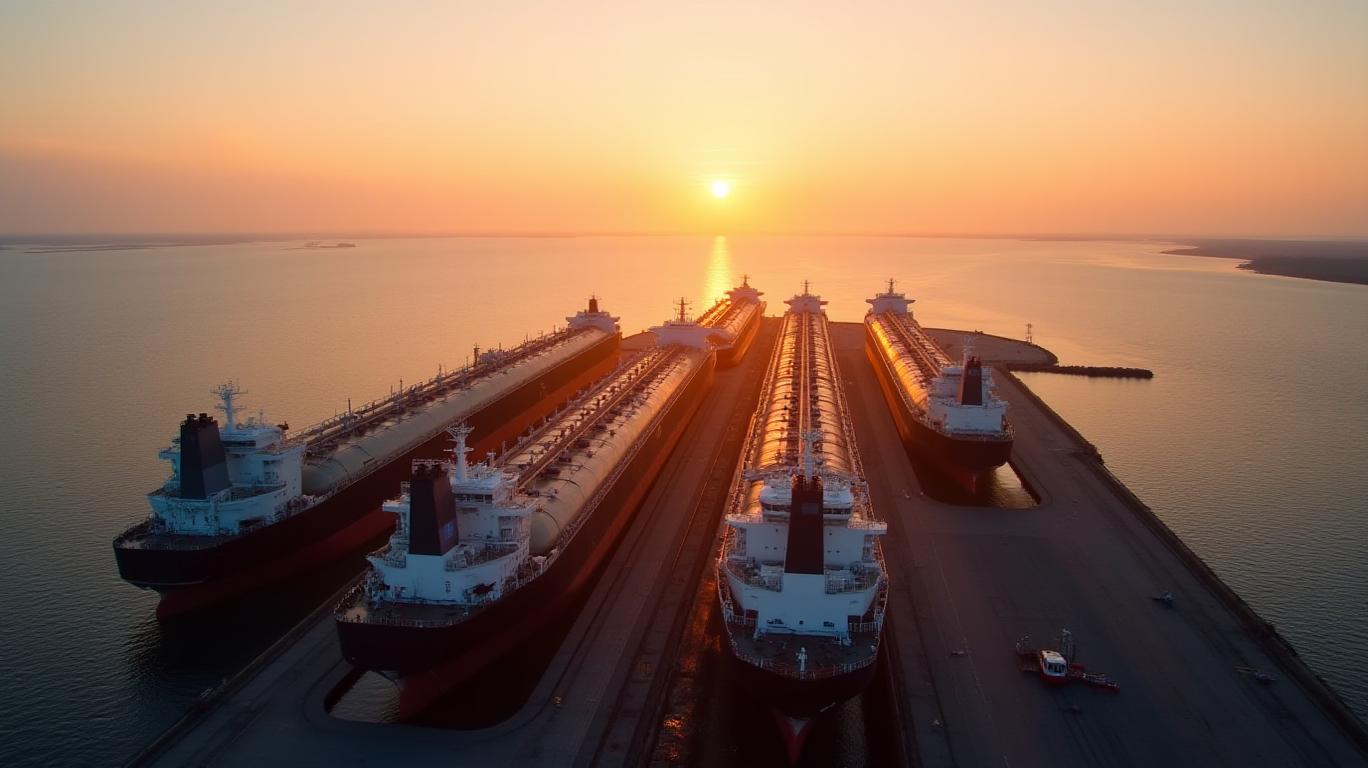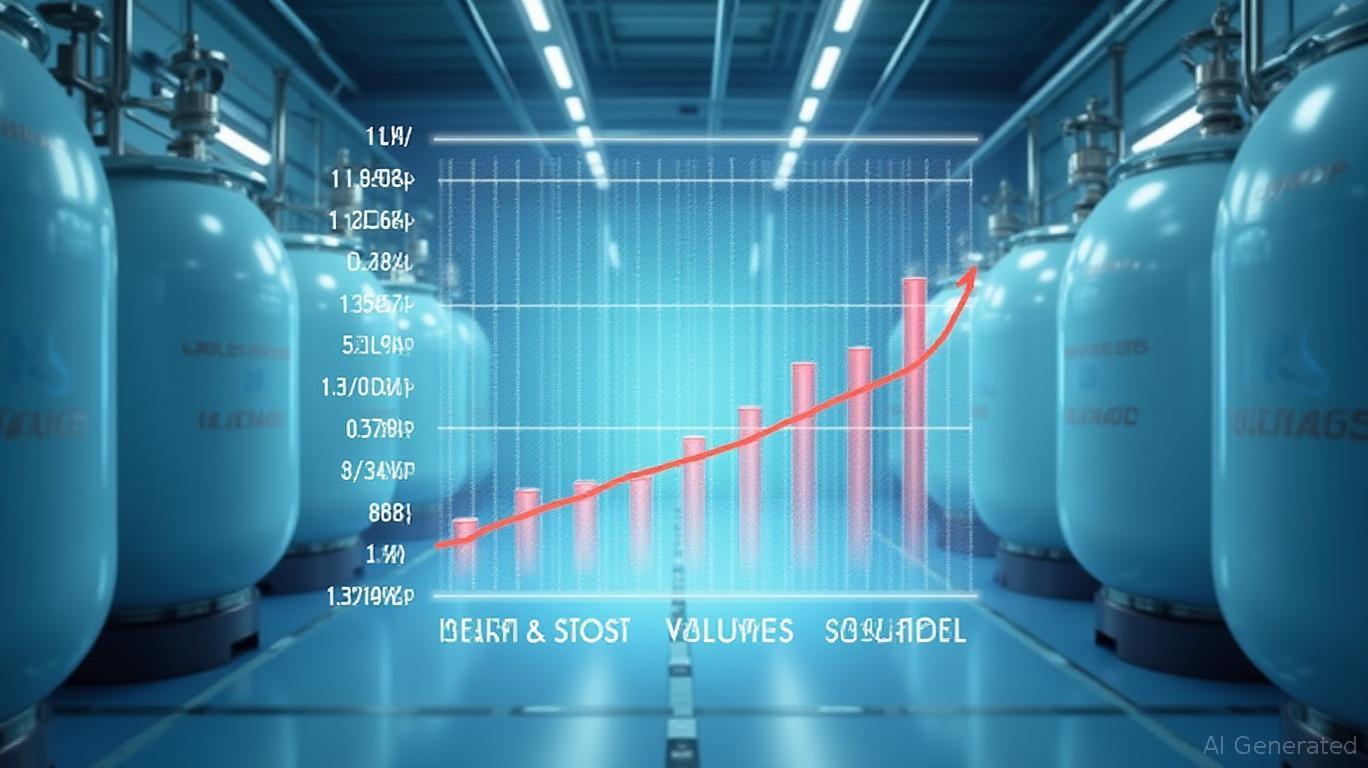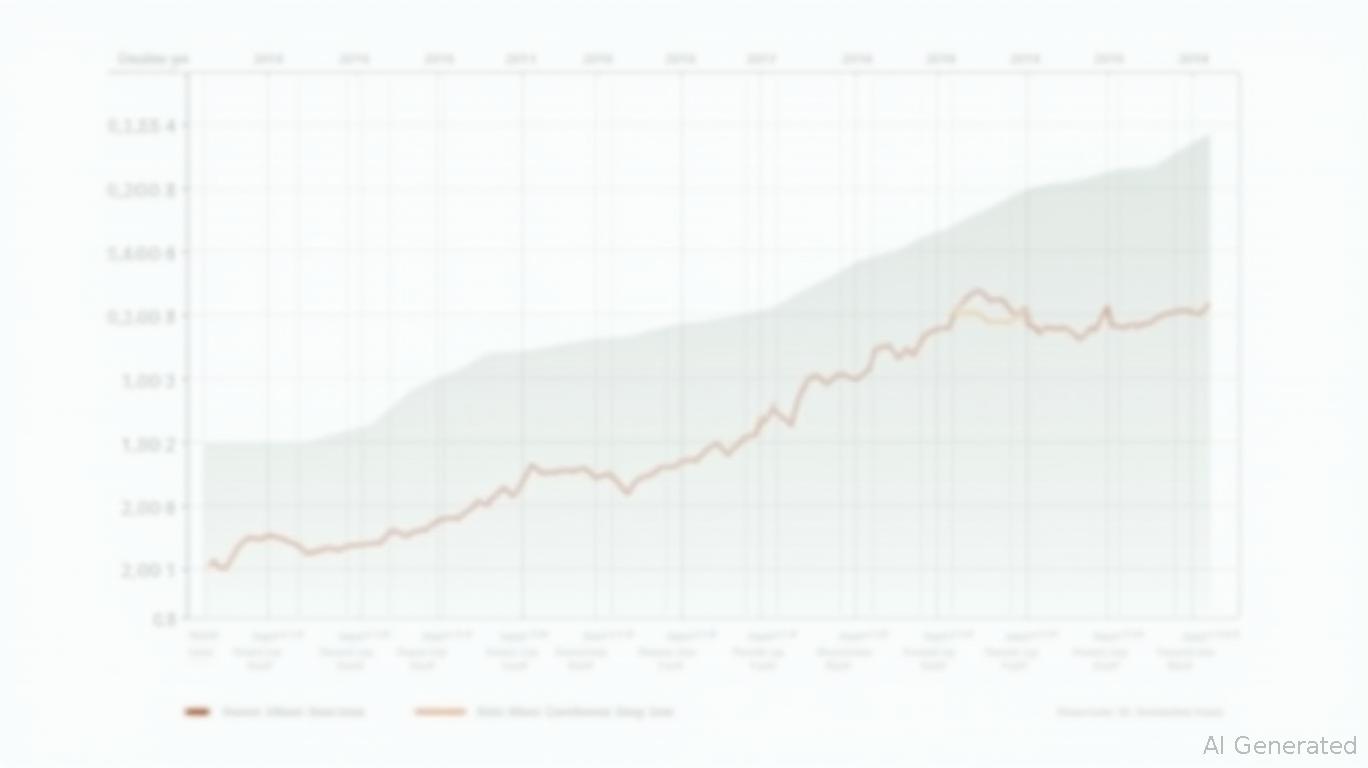Natural Gas Prices Surge: Export-Driven Tightness or a Fleeting Spike?
The U.S. natural gas market is in the throes of a dramatic transformation. Over the past month, Henry Hub futures have surged 6% to a one-month high of $4.30/MMBtu, driven by a confluence of factors: slowing production growth, record-breaking LNG exports, and dwindling storage inventories. This volatility underscores a pivotal shift in the market’s dynamics—one where global demand increasingly dictates domestic pricing power. But is this rally sustainable, or a fleeting reaction to temporary supply constraints?
Ask Aime: "Is the natural gas market rally sustainable, or is it a temporary supply issue?"

The Production Paradox: Growth Slows, But Exports Soar
Despite setting monthly production records in early 2025, U.S. natural gas output is now bumping up against its limits. Second-quarter production averaged 105 Bcf/d, but a 0.5% weekly dip in late April and a 12.7% year-over-year decline in drilling rigs (to just 96 active as of April 4) signal fragility. The Haynesville and Appalachia basins, which have fueled the boom, face headwinds: tariffs on steel and sand have crimped margins, while producers prioritize cash flow over expansion.
Yet LNG exports are roaring ahead. In April, feedgas deliveries hit a record 17.3 Bcf/d on April 9, fueled by the full ramp-up of Plaquemines LNG Phase 1 and Corpus Christi Stage 3. The EIA now projects 2025 LNG exports will average 15.5 Bcf/d, a 18% leap over 2024. With Plaquemines Phase 2 slated for late 2025, capacity could hit 16.8 Bcf/d by 2026, pushing U.S. gas deeper into global markets.
Storage: The Tightening Margin
Storage data tells a cautionary tale. As of April 4, inventories stood at 1,830 Bcf, 450 Bcf below 2024 levels and 40 Bcf beneath the five-year average. The EIA forecasts storage will end October at 3,660 Bcf, still 3% below average, even as injection rates remain sluggish. This deficit amplifies price risks: if summer cooling demand spikes or exports surge further, storage could struggle to refill, sending prices soaring.
Global Demand: Europe’s Relentless Hunger
European gas storage levels hit a multi-year low of 30% full by early April, forcing buyers to aggressively refill inventories. U.S. LNG cargoes—flexible under destination clauses—have flooded into Europe, even as trade tensions with China simmer. This dynamic has turned the U.S. into a geopolitical swing supplier: in the week of April 2, 28 LNG vessels departed America, carrying 106 Bcf of gas.
The Risks Lurking in the Data
- Rig Count Declines: Fewer rigs mean slower production growth. If Henry Hub prices stay above $5/MMBtu, drillers might add rigs—but at current prices, many plays are margin-sensitive.
- Weather Whiplash: Spring warmth reduced heating demand but could boost summer cooling needs. A hotter-than-normal July could strain storage.
- Pipeline Constraints: New export capacity may outpace takeaway infrastructure, creating bottlenecks in key basins.
Investment Takeaways: Buy the Dip, or Avoid the Trap?
The market is pricing in a $4.50/MMBtu+ ceiling for 2025, but risks are two-sided. On one hand, LNG demand and storage tightness could push prices higher. On the other, a cold-weather rally could collapse if new supply comes online faster than expected.
For investors, Cheniere Energy (LNG) and NextDecade (Plaquemines operator) stand to benefit from export growth, while drilling-focused E&Ps like Antero Resources (ANR) could thrive if prices sustain above $5/MMBtu. Meanwhile, natural gas ETFs (UGA) offer direct exposure to price movements.
Conclusion: The Era of Export-Driven Volatility
The U.S. natural gas market is no longer a domestic story. With LNG exports now accounting for 15% of total production, global demand swings—whether from Europe’s storage race or Asia’s industrial recovery—directly impact prices. While near-term fundamentals favor higher prices, investors must weigh the risks: a slowdown in export ramp-ups, a storage rebound, or a rig count revival could all derail this rally.
The key metrics to watch: weekly storage injections (target: 33 Bcf/week), Plaquemines Phase 2 startup timelines, and the Henry Hub price at $5/MMBtu—a critical threshold for drilling economics. For now, the market’s message is clear: tight supply and global hunger mean volatility is here to stay.
Avi Salzman


_442a2dcc1749832873286.jpeg)
_e68fac6d1749831664430.jpeg)






